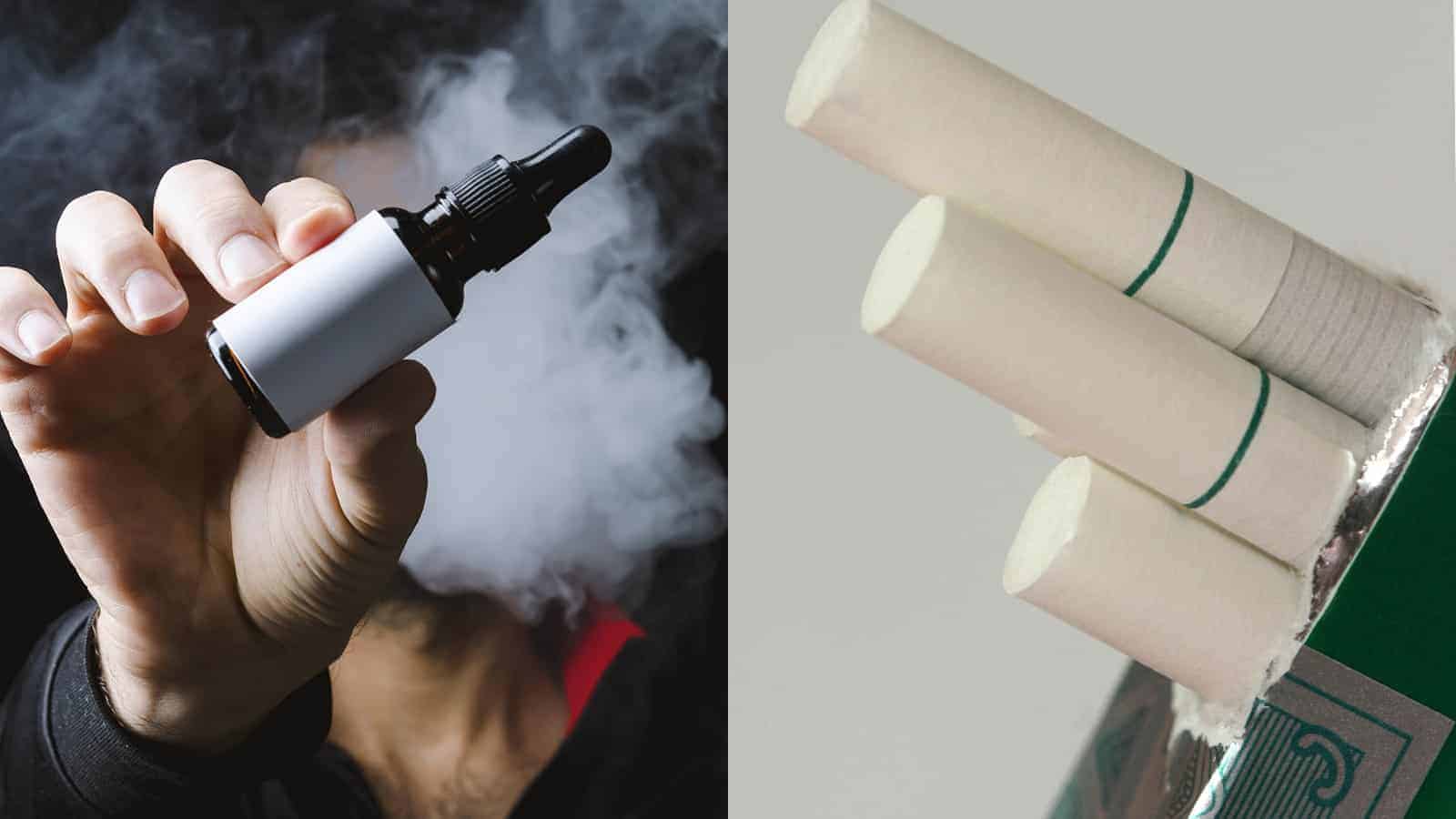In March of 2019, the FDA released a proposed ban on flavored cigars, flavored vape juice (excluding menthol or mint), and Menthol cigarettes. The government banned flavored cigarettes, other than menthol, by 2009.
This followed various actions the FDA took to regulate vape juice and ensure that manufacturers used only approved ingredients. The FDA has only had official authorization for all nicotine-related products to fall under its jurisdiction since 2016. E-cigarettes and vape juice didn’t hit the U.S. market until 2009 and became mainstream around 2012. They have been, and continue to be, under much scrutiny as to their safety and possible health consequences.
Dr. Scott Gottlieb, the FDA Commissioner, has taken a strong stance regarding flavored e-cigarettes, vape juice, and cigars due to an alarming number of teens using these products. Despite the fact that they are illegal under the age of 18, the youth gets their hand on them. Banning Menthol cigarettes is a bold step, but possibly one with backlash.
Why the distaste for flavors and menthol?
Statistics about e-cigarette use among U.S. youth:
(per the FDA website)
- Among middle and high school students, 3.62 million were current users of e-cigarettes in 2018.
- E-cigarette use, from 2017 to 2018, increased 78 percent among high school students (11.7% to 20.8%) and 48 percent among middle school students (3.3% to 4.9%) from 2017 to 2018.
- According to a 2013-2014 survey, 81 percent of current youth e-cigarette users cited the availability of appealing flavors as the primary reason for use. This includes 82% of e-cigarette users, 79% of hookah users, 74% of cigar users, and 69% of smokeless users.
The reason why e-cig users prefer flavors is that they act as a buffer to the bitterness, burning sensation, and harshness. They improve the taste and lessen the burn as the smoke goes down the throat. This makes flavored e-cigarettes, vapes, or cigars far more attractive to first-time users.
Commonly available flavors are vanilla, cherry, watermelon, berry, bubblegum, mint, menthol, cinnamon, various candy flavors, and regular tobacco flavor.
Statistics about menthol cigarettes:
(per the FDA website)
In the U.S.:
- More than 19.5 million people are current smokers of menthol cigarettes.
- Eight percent of African American smokers, 46 percent of Hispanic smokers, 39 percent of Asian smokers, and 28.7 percent of White smokers smoke menthol cigarettes.
- Youth who smoke are more likely to smoke menthol cigarettes than older smokers. More than half of smokers ages 12-17 smoke menthols.
Menthol cigarettes have a long history in the United States. They first came on the scene 1924 by an Ohio man named Lloyd “Spud” Hughs. By 1932, Spud cigarettes had become the fifth most popular cigarette in the country. That caught the attention of Brown and Williamson tobacco company, who then created Kool cigarettes in 1932. In 1956, the first filter-tipped cigarettes, Salem, hit the market.
The cooling sensation of menthol creates the illusion that it is not damaging your body like regular cigarettes. After all, your mouth and throat feel cool, not irritated. Currently, about 35% of the cigarette market comes from Menthol cigarettes.
You’ll also find menthol, or mint, in hookahs, dip, chew, snuff, e-cigarettes, and cigars. Users suggest that quitting cigarettes containing menthol is harder to quit.
E-cigarettes/vaping: safe or not?
When E-cigarettes or vape devices hit the market, they touted themselves as an alternative to cigarette smoking. Smoking in public was taboo due to second-hand smoke. And, people didn’t like the smell left on their clothes or in their cars and homes. E-cigarettes created more of a slight steam effect, rather than smoke. Plus, it has little to no odor. Thus, people didn’t cause second-hand smoke so they could smoke these devices in public without dirty looks. Finally, some suggest that it is a great way for some to quit the habit entirely. Sounds like a win-win, right?
Unfortunately, was an initial lack of information out there regarding the chemicals in e-cigarettes versus a traditional cigarette. First, many believed it was completely safe. On the other hand, some felt it was a safer option than smoking a cigarette.
What chemicals do manufacturers use in the flavoring?
The e-liquids commonly used in e-cigarettes and vaping are a combination of propylene glycol and vegetable glycerin. They form the base of the liquid, to which they later add the flavoring and the nicotine.
Aldehydes, an organic compound usually associated with aromas, along with other additives, are used for flavoring. These are food-safe ingredients. However, being safe for food is not the same as being safe for smoking or vaping. You may have read about or heard of food flavorings such as vanillin, cinnamaldehyde, and benzaldehyde. To put in simpler terms, they are added ingredients that add the flavor of vanilla, cinnamon, and almond to certain foods.
The Potential Danger of Heating Aldehydes
When these ingredients are heated, they form formaldehyde and other cancer-causing chemicals. Additionally, they cause irritation and inflammation of the lungs.
Scientists found that some of the by-products in e-liquid had a 50-80% likelihood of not breaking down upon going through the vaporization process. This is to say that a large quantity of these chemicals is reaching the airways rather than burning away in the vapor.
In a small study, it was found that the concentration of aldehydes in the breath was 10 1/2 times higher than before vaping. In the case of formaldehyde, they found that the majority of its high concentration was actually retained in the users’ respiratory tract. Some studies showed it was comparable to a traditional cigarette.
The effects of these chemicals and others are still being studied, but currently, there is evidence of respiratory issues, including lung infections, bronchiectasis, pleural effusion, and more. This does not include potential cancer-causing elements or other reactions your body may have to e-cigarettes.
Can smokers use e-cigarettes to quit smoking?
Let us address the idea that e-cigarettes can be used to quit traditional cigarettes as a nicotine replacement aid. For reference, the FDA has not approved e-cigarettes as an official nicotine replacement therapy. They have acknowledged that a percentage of smokers do use them as such.
In 2012 and 2014, scientists studied a nationally representative sample of 2,028 U.S. smokers. This study showed that long-term users had a higher quit attempt rate than short term users (72.6% vs. 53.8%) and a higher cessation rate (42.4% vs. 14.2%). Cessation rate was defined as abstinent for three months or longer.
They concluded that long-term use of e-cigarettes was associated with a higher rate of quitting. They also stated that among those making an attempt to quit, e-cigarettes surpassed the FDA-approved therapy.
Scott Weaver and his colleagues at Georgia State University performed another study in 2015-2016. They concluded that smokers who used e-cigarettes quit smoking at half the rate of smokers who did not use e-cigarettes. They also found that smokers using e-cigarettes were less likely to quit than non-users. Of the 1,284 adult smokers that were part of the study, only 858 completed their follow up survey.
We should also mention that many people who use e-cigarettes also still smoke traditional cigarettes. Additionally, e-cigarettes do still contain nicotine. Therefore it is possible to become addicted to them or move from e-cigarettes to traditional cigarettes or cigars even if you had never smoked a traditional cigarette prior.
While more studies have been performed, the results are just as inconclusive. Therefore, it will take further studies and research before it can be said if e-cigarettes decisively can help one quit smoking traditional cigarettes.
Final thoughts
The focus of the recently proposed ban on flavored e-cigarettes, vaping liquid, flavored cigars, and menthol cigarettes intends to decrease teen use of these nicotine or tobacco products. The number of teens gravitating toward these products alarms officials. Plus, teens face unknown potential health risks. By banning the flavoring which attracts these teenagers, they hope to increase the number of teens who quit or never start. The FDA does not expect this to take full effect for about two years. As a pre-emptive move, however, several states have or are in the process of implementing their own ban on the products. Users can still purchase their favorite Myle Vape Dubai online.
While more studies are underway regarding the safety of vape juice and e-cigarettes, the possibility that they may cause long-term damage to your health is not worth the risk, in our opinion. While they can be fun recreationally and could replace regular cigarettes, studies have not shown that they are any healthier than traditional cigarettes. Plus, do you really want to give huge companies who have no regard for your health even more money? Just some food for thought.


















